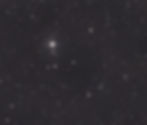M40 - Photographing One of Charles Messier's Mistakes
- Antoine & Dalia Grelin
- Aug 26, 2021
- 3 min read
Messier 40, also known as Winnecke 4 is just... two regular stars... that were cataloged by Charles Messier as a Deep Sky Object as he was trying to find a nebula. M40 is in fact not a deep sky object and was added in Messier's catalog as a mistake! It became known as "Winnecke 4" after German astronomer Friedrich August Theodor Winnecke added it in fourth place in its Winnecke Catalogue of Double Stars, in 1863.
M40 is in fact what we call an optical double star, two stars that are not related in any way but look like they are gravitationally attracted due to their close distance and similar size and brightness.
Object Designation: M40
Also Known as: Winnecke 4
Constellation: Ursa Major
Object Type: Optical Double Star
Distance: 1,142 & 457 light-years away
Magnitude: 9.6 & 10.1
Discovered in: 1777

It is important to note that Charles Messier did know that what he found was a double star and not a deep sky object when he entered it in his catalog. He simply could not find anything else around the area so he decided to add M40.
Messier was trying really hard to locate a "nebula" found by Polish astronomer Johannes Hevelius.
What Hevelius found was likely either NGC 4290 or NGC 4284. It was impossible for Messier to spot either one of these galaxies due to the small telescope he was using.
We imaged Messier 40 for just a couple of hours after being done with a different target one night. While sleeping in the car, I made sure to wake up around 3 AM to ensure SGP properly slewed the telescope to M40 automatically.
Below is our full image of M40! We are not super happy with it mostly because for some reason it still looks grainy despite our attempts at reducing the noise in several ways, but it still is a beautiful image overall.
Our image of Messier 40

GEAR USED:
Camera: QHY600C
Telescope: Stellarvue SVX130
Mount: Astro-Physics Mach1
Guiding: ZWO ASI 290MM Mini
Accessories: Moonlite Nitecrawler focuser / Pegasus Astro Ultimate Powerbox
Power: Jackery Lithium Battery
Processing: PixInsight
ACQUISITION DETAILS:
Total Exposure Time: 2 hours
Exposure Time per frame: 1 minute
Filters: ZWO IR Cut Filter
Gain: 56
How to find Messier 40?

Messier 40 is located in the constellation Ursa Major, more specifically in the famous Big Dipper asterism. To find it, look for the bright star Dubhe, or Megrez, which connects the handle to the pan. Winnecke 4 lies just North of Megrez, slightly towards Dubhe.
Messier 40 can be spotted with astronomy binoculars and is easy to see through telescopes of any size.
Processing Messier 40
Messier 40 is a very easy target to process. We in our case struggled with an unexpectedly high amount of noise, most likely because we stacked all the files without really going through them one by one. A few of our frames were probably affected by some car's headlights but we (sadly) did not take the time to check them carefully prior to stacking.
The only tricky part when processing M40 is to make sure not to ruin the nearby galaxies, like NGC 4284 and NGC 4290, as well as the bright star Megrez. Go through all your processing steps conservatively and you should end up with a beautiful and clean image.
Below is a single 1-minute shot unedited.

If you are interested in learning how I process all our images, you can download a full PDF "follow along" file that contains 77 pages, a full 1 hour and 45 minutes walkthrough tutorial video, our custom pre-sets and even raw data HERE.
Want to learn all aspects of astrophotography in the most efficient way possible?
The Galactic Course includes a LIFETIME membership that gives you unlimited access to all current and upcoming astrophotography content. Step into an ever-growing realm of knowledge and learn at your own pace. Make life-long friends and connections with other members, and get tips from instructors that truly care about your journey and progress under the night sky.
Final Thoughts
Messier 40 may be a mistake, but it is a beautiful and happy one! Although not a real deep sky object like Messier had hoped, it is nice to have a bright optical double star in the catalog. It looks really nice in photographs, it is easy to image, and has a couple of galaxy neighbors!
Have you captured M40? Attach your image in the comments and let us know your acquisition details!
Clear Skies,
Galactic Hunter















